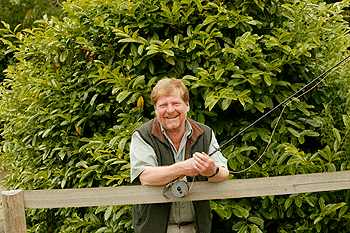Covercrops and the weather

The world says that we Brits are preoccupied with the weather, and that is probably true. But then, if you get the sort of variation that we experience, that is hardly surprising. And gamekeepers are no exception to the rule, because weather has such an enormous impact on what we do. Times have changed though; once upon a time most keepers would be discussing the summer weather in relation to wild game hatches, but today, the big topic is impact on covercrops.
Cast your mind back, and you will remember the cold of March and early April that broke yet more weather records, especially in the South. Even now, in high summer, my garden is still “behind”. It is a similar situation with my covercrops, but at least they are there. I am quite chuffed about that, because I’m hearing about a few failures in cold soil.
The usual inquisition began in the middle of May. “Got your crops in yet?” they started asking. “Plenty of time for that,” was my standard reply, “I’m waiting for the soil to warm up.” So, with sorghum, in particular, needing warm soil to germinate quickly, I waited until 30 May to start sowing. By then the weather had warmed a little and a dry spell had broken with a decent drop of rain. With warm, sunny conditions predicted for a few days, the moment had arrived and was not to be missed.
In this respect I am lucky compared with the average shoot, because I have the willing help of Erik, the estate manager, who is happy to drop things when it is time to go. This is so much better than having to wait for the moment when the contractor, or farm department, can fit in the job. Our estate maintenance tractor is there whenever it’s needed, and we have a set of small second-hand tackle available.
There is even an old precision drill, but in practice I find that it is as easy to hand broadcast the seed for most of our patches. Once this is done, Erik follows close behind with a harrow to bury the seed and a roller to compact the ground. This ensures good contact between the seed and soil, which is essential for good, even germination and helps to conserve moisture if the weather should turn dry just after sowing.
Guaranteed cover
During my 30-odd years with the Game & Wildlife Conservation Trust (GWCT), I have never been a great enthusiast of perennial covercrops. I have always felt that game prefers well-grown annual crops such as kale, maize and sorghum, but note those words “well grown”. Experiencing difficulties with using the same sites, year on year, last year I decided that a little bit of guaranteed cover might be worth a go, so I tried an experiment with reed canary grass.
This is where the drill comes in, because keeping this crop in rows is essential to maintaining an attractive habitat for pheasants and partridges. The other thing to realise is that canary grass takes two summers to come to its full flourish. So, it was not until a few weeks ago that we could begin to assess the results of last summer’s experiment.
By the end of May, however, it was clear that our trial has been a fair success, with the grass growing fast and already more than 2ft high. However, I am glad that I have not gone for big blocks; instead, we have planted a couple of drill widths down the outside of two of our most exposed plots, plus a flushing area. This year, we have done the same again with two more. In both years, I also broadcast sorghum over the same area, before Erik drilled the grass over it, so as to have some cover in the first winter.
From now on I consider it essential to make regular visits to crop sites to spot any problems. My standard remedy for failed patches is to broadcast a bit of mustard over them in wet weather, because this crop establishes pretty reliably without the need to drill. This is clearly not as long lasting as the likes of kale or sorghum, but it is better than nothing. Last year’s experiment with Lightning mustard from Bright Seeds clearly showed that it was more frost tolerant than my old favourite Tilney, too.
This year I’m confident that there will be no need to patch up, but I will still be broadcasting my usual patches of mustard for extra stubble cover in a week or so. This goes into the standing wheat crop on a breezy evening, when a shower is expected, and gives me a head start instead of waiting until after harvest. Given a little sprinkle of fertiliser as soon as the corn is off, it provides both early season shoot cover and escape patches for our precious wild partridges when trouble looms overhead.








